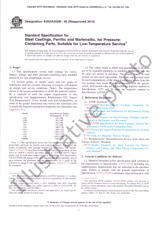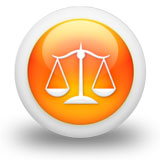We need your consent to use the individual data so that you can see information about your interests, among other things. Click "OK" to give your consent.
ASTM D8361-20
Standard Test Method for Total Organic Carbon in Water by Two Stage Wet Chemical Catalyzed Hydroxyl Radical Oxidation with Infra-Red Detection of Resulting Carbon Dioxide
Translate name
STANDARD published on 1.12.2020
The information about the standard:
Designation standards: ASTM D8361-20
Publication date standards: 1.12.2020
SKU: NS-1013205
The number of pages: 9
Approximate weight : 27 g (0.06 lbs)
Country: American technical standard
Category: Technical standards ASTM
Annotation of standard text ASTM D8361-20 :
Keywords:
final discharge monitoring, hydroxyl radical oxidation, influent monitoring, non-dispersive infrared analyzer, non-purgeable organic carbon, on-line monitoring system, process control, product loss prevention, purgeable organic carbon, total carbon, total inorganic carbon, total organic carbon, volatile organic carbon, waste minimization, water analysis,
Additional information
| Significance and Use |
|
5.1?This test method is used for determination of the carbon content of water from a variety of natural, domestic, and industrial sources. In its most common form, this test method is used to measure organic carbon as a means of monitoring organic pollutants in industrial wastewater. These measurements are also used in monitoring waste treatment processes. 5.2?The relationship of TOC to other water quality parameters such as chemical oxygen demand (COD) and total oxygen demand (TOD) is described in the literature 1.1?This test method covers the catalyzed hydroxyl radical oxidation system for the in-stream, online (Guide D5173) or laboratory analysis of total organic carbon, total carbon and total inorganic carbon in drinking water, wastewater, industrial process water, and effluent water. It is applicable to both dissolved and suspended materials. Suspended materials and particulates up to 2 mm in diameter can be analyzed. 1.2?This test method allows for determination of TOC ? 1 mg/L, TC ? 1 mg/L, and TIC ? 1 mg/L. The lower and upper working ranges are restricted by instrument-dependent conditions (for example, sample volume, amount of each reactant) and can be adjusted for a wider range. 1.3?This test method can be applied for the determination of total carbon (TC) and total inorganic carbon (TIC). Volatile or purgeable organic carbon (VOC, POC) can be determined separately by this test method (see Annex A1). 1.4?This test method allows the measurement of organic and inorganic carbon concentration samples, and samples containing dissolved chlorides up to seawater chloride concentrations. 1.5?The chemical oxidation process, applied in this test method, takes place at ambient pressure and temperature by using hydroxyl radicals. The advantage of catalytic hydroxyl radical oxidation is that it is free from seawater salinity interference. 1.6?The values stated in SI units are to be regarded as standard. No other units of measurement are included in this standard. 1.7?This standard does not purport to address all of the safety concerns, if any, associated with its use. It is the responsibility of the user of this standard to establish appropriate safety, health, and environmental practices and determine the applicability of regulatory limitations prior to use. 1.8?ASTM International takes no position respecting the validity of any patent rights asserted in connection with any item mentioned in this standard. Users of this standard are expressly advised that determination of the validity of any such patent rights, and the risk of infringement of such rights, are entirely their own responsibility. 1.9?This international standard was developed in accordance with internationally recognized principles on standardization established in the Decision on Principles for the Development of International Standards, Guides and Recommendations issued by the World Trade Organization Technical Barriers to Trade (TBT) Committee. |
We recommend:
Updating of laws
Do you want to be sure about the validity of used regulations?
We offer you a solution so that you could use valid and updated legislative regulations.
Would you like to get more information? Look at this page.




 Cookies
Cookies
